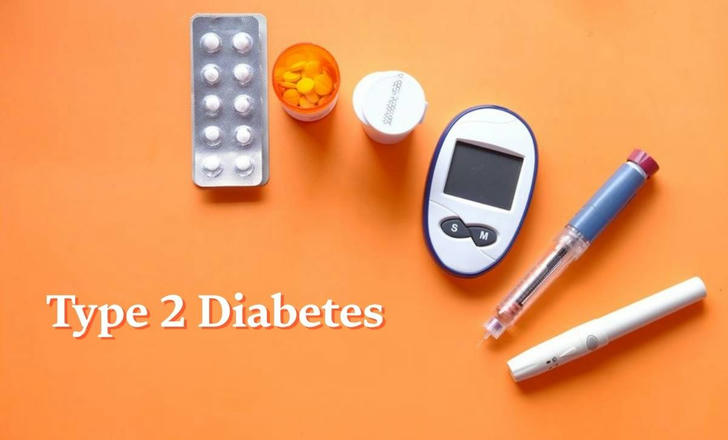Understanding Type 2 Diabetes: Treatments, Medications, and Management Options
Type 2 diabetes is a common condition that affects how the body uses insulin. Many discover it through routine health checks or mild symptoms. This guide explains practical ways to manage it—through diet, daily habits, and available medications—helping reduce long-term risks and improve daily stability.

What Is Type 2 Diabetes?
Type 2 diabetes is a long-term metabolic condition where the body either resists the effects of insulin or doesn’t produce enough to maintain normal glucose levels. Unlike type 1 diabetes, which is usually diagnosed earlier in life, type 2 typically develops gradually and is more common in adulthood. Factors such as diet, activity level, weight, and genetics can contribute to its development.
Common Symptoms and Early Warning Signs
Some people may have type 2 diabetes for years without noticeable symptoms. However, common signs include:
Increased thirst and frequent urination
Fatigue
Blurred vision
Slow-healing sores or frequent infections
Tingling or numbness in hands or feet
Early detection plays a key role in preventing serious health issues such as nerve damage, kidney problems, and heart disease.
##👁 Effects of Type 2 Diabetes on Vision
Type 2 diabetes can affect eyesight gradually or suddenly. High blood sugar levels may damage small blood vessels in the eyes, especially the retina. This can lead to:
Blurry vision: Often a temporary effect of fluctuating blood sugar.
Diabetic retinopathy: Caused by damage to blood vessels, leading to dark spots or vision loss if untreated.
Macular edema: Swelling in the central part of the retina that can distort vision.
Increased risk of cataracts and glaucoma: Diabetes may cause clouding of the eye’s lens or increased pressure in the eye.
Regular eye exams help detect early signs of these conditions. Good blood sugar control and timely treatment may help protect long-term vision.
First-Line Treatments for Type 2 Diabetes
Initial treatment often begins with lifestyle changes:
Nutrition: A balanced diet focused on whole grains, lean protein, healthy fats, and limited refined sugars.
Physical activity: Regular exercise such as walking, cycling, or swimming can help lower blood sugar levels.
Weight management: Even modest weight loss can improve insulin sensitivity.
Doctors may also recommend tracking blood sugar levels regularly to monitor progress and make informed adjustments.
Oral Medications for Type 2 Diabetes
If lifestyle adjustments are not enough, healthcare providers may prescribe medications to help control blood sugar. Common types include:
Metformin: Often the first medication prescribed. It helps reduce glucose production in the liver and improves insulin response.
Sulfonylureas: Stimulate the pancreas to release more insulin.
DPP-4 inhibitors: Help the body continue making insulin for longer periods.
SGLT2 inhibitors: Assist the kidneys in removing excess glucose through urine.
Each option may have different side effects and is selected based on individual health profiles.
Injection Medications: Beyond Insulin
While insulin therapy is sometimes needed, newer injectable medications have expanded treatment possibilities:
GLP-1 receptor agonists: These slow digestion, reduce appetite, and support weight management.
Long-acting insulins: Used when oral medications are not enough to maintain healthy glucose levels.
These medications are often used alongside oral therapies to improve overall blood sugar control.
Diabetes Medications That Support Weight Management
Some type 2 diabetes medications not only help control blood sugar but also support weight management as part of a broader treatment plan. These medications affect appetite, digestion, and insulin sensitivity, which can influence body weight.
1. GLP-1 Receptor Agonists
These medications mimic a natural hormone that regulates blood sugar and appetite. They slow digestion, increase feelings of fullness, and help reduce calorie intake. Some common examples include:
Semaglutide (Ozempic, Rybelsus)
Liraglutide (Victoza)
Dulaglutide (Trulicity)
Clinical studies have shown that individuals taking these medications often experience gradual weight reduction alongside improved blood sugar levels.
2. SGLT2 Inhibitors
These work by helping the kidneys remove excess glucose through urine. This process may also lead to a modest decrease in weight and blood pressure. Examples include:
Canagliflozin (Invokana)
Dapagliflozin (Farxiga)
Empagliflozin (Jardiance)
SGLT2 inhibitors are often used in combination with other treatments and can be a useful option for those also managing heart or kidney-related conditions.
3. Metformin
Though not primarily prescribed for weight loss, Metformin may help reduce appetite in some people and has been associated with mild weight reduction over time. It’s often recommended as a first-line treatment for newly diagnosed type 2 diabetes.
Note: Weight changes vary by individual and should be monitored by a healthcare provider. Combining medication with healthy eating habits and physical activity can further support long-term results.
Long-Term Management Strategies
Managing type 2 diabetes involves more than medication. Long-term health depends on:
Regular check-ups and lab tests (such as A1C levels)
Routine eye and foot exams
Stress management techniques
Smoking cessation and limited alcohol intake
Staying informed and actively participating in care planning can help maintain better blood sugar control and overall wellness.
Conclusion
With the right combination of diet, physical activity, and medication, it’s possible to live well and minimize complications. Regular monitoring and updates to the care plan help keep blood sugar within target ranges over the long term.
